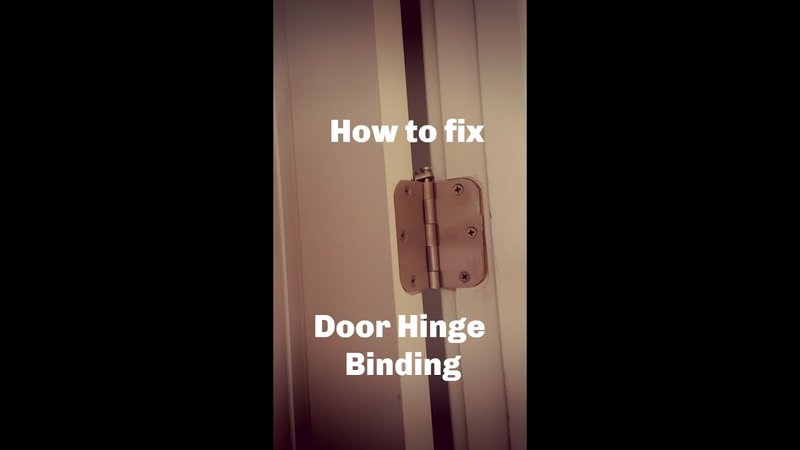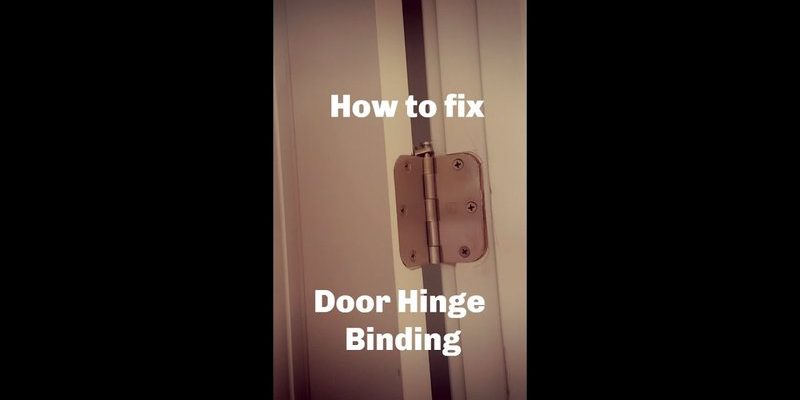
Addressing this issue isn’t just about fixing a door; it’s about understanding how things work together. Picture your door as a puzzle piece that needs to fit just right with its surroundings. When you have a mismatch, that’s when you experience binding. In this article, we’ll delve into the mechanics of door hinges, common causes of binding, and practical solutions to help your door swing smoothly.
Understanding the Basics of Door Hinges
To get to the root of your binding door hinge, let’s start with a quick primer on how door hinges work. A door hinge is a simple mechanical device that allows a door to pivot open and closed. Think of it as a tiny axle that connects the door to its frame. When properly aligned, hinges let the door swing freely, just like a swing on a playground. But when something goes awry, it can feel more like trying to push open a rusty gate.
Door hinges come in various styles and materials, including butt hinges, continuous hinges, and concealed hinges. Each type has its unique installation method and purpose. To keep things running smoothly, these hinges need to be installed correctly, and the door itself must be in good condition. If any part of this setup is off, it can lead to binding, especially when the door is fully closed.
Common Causes of Door Hinge Binding
So, why exactly does your door hinge bind when the door is closed? There are several reasons this can happen. Understanding these causes can help you pinpoint the problem.
1. Misalignment: If your door isn’t hanging straight, it can create pressure on the hinges when closed. This misalignment can be caused by improper installation or normal wear and tear over time.
2. Hinge Wear: Like any mechanical part, hinges can wear down. Rust, dirt, and lack of lubrication can lead to binding. If you notice a squeaky sound, it’s a telltale sign that your hinges could use some attention.
3. Door Swelling: Changes in temperature and humidity can cause wooden doors to expand. When this happens, even a well-aligned door can bind against the frame, especially when closed.
4. Obstructions: Sometimes, the simplest explanations are the most overlooked. Make sure there’s nothing blocking the door or that debris isn’t stuck between the door and its frame.
Let’s dive deeper into these common causes to help you better understand how they contribute to the issue.
How Misalignment Affects Your Door Hinge
Misalignment is often a primary culprit when your door hinge binds only when closed. Imagine your door like a seesaw; if one side is higher than the other, it won’t function properly. Misalignment can occur for many reasons, including settling of the house, improper installation, or even wear on the door frame.
You might notice that the door binds at the top or bottom when closed. This can indicate that the hinge isn’t flush with the door or the frame. If the alignment is off, adjusting the hinge positions could resolve the binding issue.
To fix a misaligned door, you’ll want to loosen the screws on the hinges slightly, adjust the door to a more centered position, and then retighten the screws. It’s a simple fix that can make a big difference in how your door operates!
The Importance of Hinge Maintenance
Regular maintenance of your door hinges can significantly reduce binding issues. When was the last time you took a moment to check on your hinges? Neglecting them can lead to rust, dirt buildup, and other problems that contribute to binding.
Here are some tips for maintaining your hinges:
- Lubrication: Apply lubricant to your hinges at least twice a year. Use a silicone spray or a penetrating oil for best results. This helps reduce friction and keeps the hinge operating smoothly.
- Cleaning: Wipe down your hinges regularly to remove dust and grime. A clean hinge is a happy hinge!
- Check for Wear: Inspect the hinges for any signs of wear or rust. If any parts look damaged, it might be time to replace them.
By incorporating regular maintenance into your routine, you’re less likely to encounter binding issues down the line.
Dealing with Door Swelling
If you have a wooden door, door swelling can be a significant factor in hinge binding. When wood absorbs moisture, it expands. This can be particularly noticeable during humid weather. When the door swells, it can press against the frame and create binding.
To minimize door swelling, consider these strategies:
– Seal the Wood: Use a high-quality sealant or weatherproof finish on your doors. This helps prevent moisture from penetrating and causing swelling.
– Control Humidity: Use a dehumidifier in your home to maintain consistent humidity levels. This can help keep your wooden doors in check.
– Trim the Door: If swelling is a persistent problem, you might need to trim the door slightly to ensure it doesn’t bind against the frame.
By taking these steps, you can reduce the likelihood of your door binding due to swelling.
Identifying Obstructions
Sometimes, the issue with a binding door hinge is as simple as an obstruction. Whether it’s a pesky rug or a piece of furniture, any object that hinders the door’s movement can create problems.
To troubleshoot this, stand back and observe how the door interacts with its environment. Is there anything that could be impeding its movement? Also, check for debris stuck in the hinge mechanism. A thorough cleaning may solve the issue.
If you find that an obstruction is the cause, simply moving the item or clearing the debris can help your door operate smoothly again.
Final Thoughts on Fixing Your Door Hinge
In conclusion, a binding door hinge when fully closed can stem from several causes, including misalignment, hinge wear, door swelling, and obstructions. By understanding these factors, you can take action to resolve the issue effectively.
Remember that regular maintenance is key! A little care goes a long way in ensuring your door swings smoothly and operates correctly. Whether it’s checking for alignment or lubricating the hinges, these simple tasks can save you from future headaches.
If you encounter persistent issues, it may be time to consult a professional. But often, with a few adjustments and a bit of care, you can fix that binding door hinge and keep your home running smoothly.
